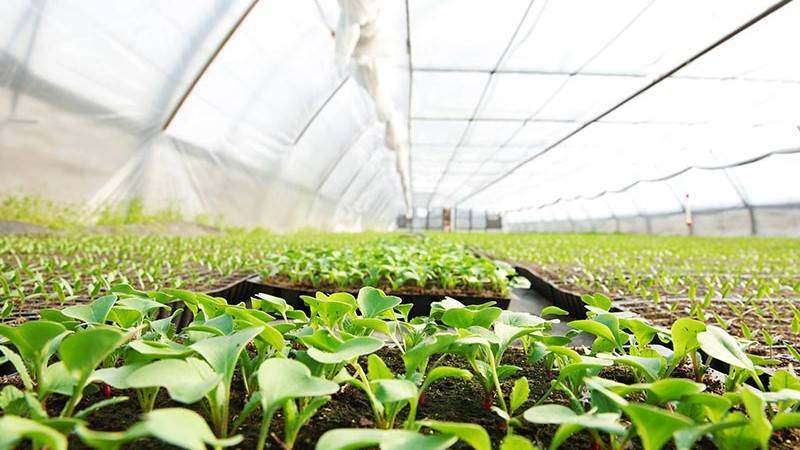Understanding What Lab Analyses are telling you


Laboratory testing is important for not only diagnosing problems but also for identifying potential problems.
These tests can serve as a guide to show what corrective measures are needed to correct / prevent nutritional problems. Laboratory testing that will be discussed are for water, growing medium, plant tissue and fertilizer solution.
Water Test
The first goal of testing water is determine the alkalinity, which is the limestone content in water. The higher the alkalinity, the faster the pH of the growing medium rises. This is useful for determining which fertilizer to use with your water (because fertilizer can be used to offset the pH increases in the growing medium from the alkalinity) and whether acid injection is required.
Next, look at the elements in the water. There are elements needed by plants that are not always found in fertilizer, but might be supplied by the water. These elements and minimum levels required by plants include calcium (40 ppm), magnesium (25 ppm) and sulfate (60 ppm). If the fertilizer plus water are lacking in these elements, then they need to be added in the form of cal-mag fertilizers, Epsom salts, etc. Water can also include other beneficial elements such as macronutrients and micronutrients, but they are usually found in low quantities and must be provided by the fertilizer.
There are also undesirable elements in the water such as sodium, chloride, fluoride and even boron that should not exceed 50, 70, 1 and 0.5 ppm, respectively. If one or more does, it could lead to high salts, nutritional imbalances and growth problems. Frequent leaching of the growing medium may be needed and if the salts or individual element(s) are excessive, reverse osmosis may be required.
Last is the Electrical Conductivity (E.C.) or soluble salts in the water. Some water sources have high levels of many elements, creating high E.C. If the E.C. of the water exceeds 0.8 mmh/cm, then this plus the E.C. coming from the fertilizer and injected acid may cause soluble salts to accumulate in the growing medium. Frequent leaching will be required and if the salts in the water are excessive, reverse osmosis may be necessary.
Growing Medium Test
The first parameters to observe are the pH and E.C. The pH should be 5.5-6.2, with petunias and calibrachoa preferring the lower end of the range and geraniums and marigolds preferring the upper end. If the pH is high for the crop, then use a fertilizer with higher potential acidity and/or acid injection may be needed. If pH is low, then switch to a potentially basic fertilizer and/or liquid limestone may need to be applied.
The E.C., which measures for salts coming from fertilizer, water, starter fertilizer charge and acids, should be 1.0-2.5 mmhos/cm (Saturate Media Extract method). The lower end is ideal for young plants and the higher end for heavy feeders like petunia. If E.C. is low, the fertilizer application rate is insufficient. If it is high, determine the source and leach the growing medium. If excessive salts are coming from fertilizer, reduce the application rate or confirm the stock tank is mixed correctly. If they are coming from the water, other measures may be needed.
Next check individual nutrient levels. If individual nutrient levels are low it can lead to deficiencies and if one or more is high it can lead to toxicities or deficiencies of other elements. If a macronutrient is too low or too high, the fertilizer rate needs to be adjusted. If a micronutrient is too high or too low, the same applies, but the pH of the growing medium also plays a role. With the exception of molybdenum, if the growing medium pH is high, micronutrients become unavailable and if it is low, micronutrients become excessively available.
Tissue Test
This test shows the levels of all nutrients in the tissue. However, it took time for these to develop, so the tissue test indicates the nutritional of the plant from 1-2 weeks ago. This coupled with a media analysis provides nutrition information from two different points in time. If the tissue and media analyses do not show the same trends, then something has changed in the fertility program from the time the tissue developed to the time of media sampling. For example, if the growing medium has normal nutrient levels, but the tissue has macronutrient deficiencies, this means the crop was under fertilized in the past, but the fertilizer rate has been corrected. If a nutrient level in the tissue is too high or low is could be from fertilizer application rate, the growing medium pH (in the case of micronutrients) or an imbalance in the nutrients supplied to the crop. For example, if calcium deficiency is occurring, but magnesium levels are high, you may notice that the ideal calcium:magnesium ratio in the media of 2:1 to 4:1 is 1:1. Therefore a high magnesium ratio may be inducing calcium deficiency.
The best way to identify a problem in which some plants of the same cultivar, planted at the same time are abnormal and some are normal is to submit both media and tissue from both for comparison. This will easily show differences that can provide the answer to the abnormal growth. It is not uncommon that testing of just abnormal plants will not show any significant issues and thus miss the cause of the problem.
Fertilizer Solution Test
This is often used to verify if the fertilizer application rate is accurate and if the nutrient levels provided by the fertilizer correspond with the analysis on the packaging.